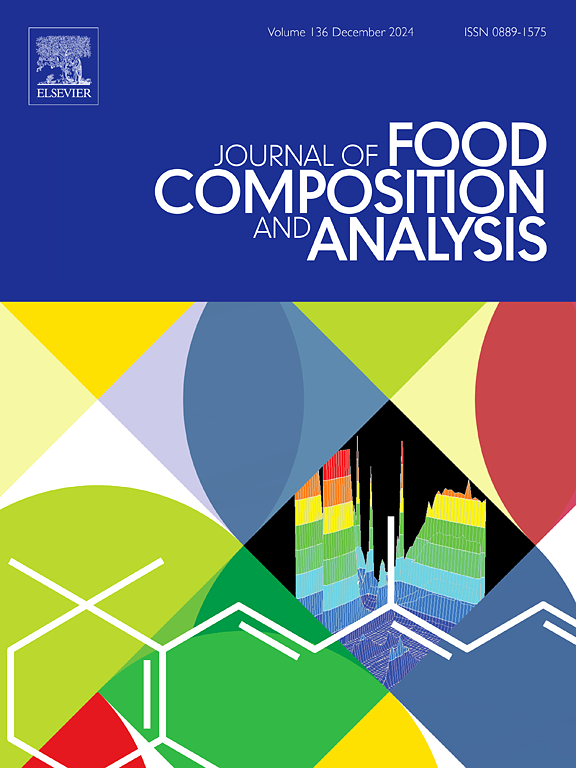Research on rapid non-destructive detection of tannin and protein content in sorghum based on multi-output Gaussian process
IF 4
2区 农林科学
Q2 CHEMISTRY, APPLIED
引用次数: 0
Abstract
Sorghum grains' tannin and protein content significantly affect their quality and uses. To address the time-consuming and high-cost issues associated with conventional techniques, this study utilizes near-infrared spectroscopy technology combined with chemometric methods to achieve rapid and non-destructive detection of tannin and protein content in sorghum. Sorghum grains with tannin content of 0.47 % −3.21 % and protein content of 5.37 % −8.23 % were taken as samples, data preprocessing was performed using Standard Normal Variate Transformation (SNV), and the sample set was partitioned using the sample set partitioning based on joint X-Y distances (SPXY) algorithm. A Multi-Output Gaussian Process Regression (MOGPR) model was established and compared with models such as Single-Output Gaussian Process Regression (SOGPR), Partial Least Squares Regression (PLSR), and Back Propagation Neural Network (BPNN). The results indicate that the Gaussian Process Regression (GPR) model significantly outperforms the PLSR and BPNN models, and the MOGPR model clearly surpasses the SOGPR model. In the prediction sets for tannin and protein, RP2 values are 0.9790 and 0.9500, RMSEP values are 0.0587 and 0.1699, and RPD values are 6.8928 and 4.4710, respectively. The results indicate that the MOGPR model established using near-infrared spectroscopy in conjunction with chemometrics is more suitable for the rapid and non-destructive detection of tannins and proteins in sorghum.
求助全文
约1分钟内获得全文
求助全文
来源期刊

Journal of Food Composition and Analysis
工程技术-食品科技
CiteScore
6.20
自引率
11.60%
发文量
601
审稿时长
53 days
期刊介绍:
The Journal of Food Composition and Analysis publishes manuscripts on scientific aspects of data on the chemical composition of human foods, with particular emphasis on actual data on composition of foods; analytical methods; studies on the manipulation, storage, distribution and use of food composition data; and studies on the statistics, use and distribution of such data and data systems. The Journal''s basis is nutrient composition, with increasing emphasis on bioactive non-nutrient and anti-nutrient components. Papers must provide sufficient description of the food samples, analytical methods, quality control procedures and statistical treatments of the data to permit the end users of the food composition data to evaluate the appropriateness of such data in their projects.
The Journal does not publish papers on: microbiological compounds; sensory quality; aromatics/volatiles in food and wine; essential oils; organoleptic characteristics of food; physical properties; or clinical papers and pharmacology-related papers.
 求助内容:
求助内容: 应助结果提醒方式:
应助结果提醒方式:


